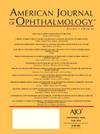美国成年人视力障碍的收入不平等,1999-2018。
IF 4.1
1区 医学
Q1 OPHTHALMOLOGY
引用次数: 0
摘要
研究表明,美国低收入成年人视力困难的患病率高于高收入成年人。我们的目的是研究视力困难中收入不平等的趋势,并确定解释因素的贡献。设计一项横断面和趋势研究。方法我们的研究使用1999-2018年全国健康访谈调查(NHIS)的数据,估计了美国18岁及以上成年人自我报告视力困难的收入相关不平等。浓度指数用于衡量收入相关的视力困难不平等,并分解为影响因素。我们研究了1999年至2018年与收入相关的视力困难不平等的时间变化以及造成这些变化的因素。结果1999年至2018年,视力困难主要集中在低收入人群中,收入不平等程度有所扩大。分解分析显示,贫困收入比和公共医疗保险覆盖率是造成视力困难收入相关不平等的重要因素,吸烟、缺乏运动和女性的影响较小。在所有变量中,非白人种族/民族、较低的体育活动和贫困收入比是解释视力困难收入相关不平等变化的重要因素。结论视力困难在低收入人群中更为普遍。我们的研究增强了对视力困难的社会经济差异的理解,这可以为如何最好地部署眼科保健资源提供信息,以最大限度地发挥美国人口的视觉潜力。本文章由计算机程序翻译,如有差异,请以英文原文为准。
Income-Related Inequalities in Vision Difficulty Among US Adults, 1999-2018
Purpose
Research has shown that the prevalence of vision difficulty is higher among US adults with low income than among those with higher income. We aimed to examine the trends in income-related inequalities in vision difficulty and to identify the contributions of explanatory factors.
Design
A cross-sectional and trend study.
Methods
Our study estimated income-related inequalities in self-reported vision difficulty among US adults aged 18 years or older using data from the National Health Interview Survey (NHIS) during 1999-2018. The concentration index was used to measure income-related inequality in vision difficulty and was decomposed into contributing factors. We examined temporal changes in income-related vision difficulty inequalities and contributors to those changes from 1999 to 2018.
Results
We found that vision difficulty was concentrated among lower income groups and the degree of income-related inequality in vision difficulty widened between 1999 and 2018. Decomposition analysis revealed that poverty-to-income ratio and public health insurance coverage were important contributors to income-related inequalities in vision difficulty, with smaller contributions made by smoking, physical inactivity, and female sex. Among all variables, non-White race/ethnicity, lower physical activity, and poverty-to-income ratio were important factors explaining the change in income-related inequality in vision difficulty.
Conclusion
Vision difficulty was more prevalent in low-income populations. Our study enhances the understanding of socioeconomic disparities in vision difficulty, which could inform how to best target the deployment of eye care resources to maximize the visual potential of the US population.
求助全文
通过发布文献求助,成功后即可免费获取论文全文。
去求助
来源期刊
CiteScore
9.20
自引率
7.10%
发文量
406
审稿时长
36 days
期刊介绍:
The American Journal of Ophthalmology is a peer-reviewed, scientific publication that welcomes the submission of original, previously unpublished manuscripts directed to ophthalmologists and visual science specialists describing clinical investigations, clinical observations, and clinically relevant laboratory investigations. Published monthly since 1884, the full text of the American Journal of Ophthalmology and supplementary material are also presented online at www.AJO.com and on ScienceDirect.
The American Journal of Ophthalmology publishes Full-Length Articles, Perspectives, Editorials, Correspondences, Books Reports and Announcements. Brief Reports and Case Reports are no longer published. We recommend submitting Brief Reports and Case Reports to our companion publication, the American Journal of Ophthalmology Case Reports.
Manuscripts are accepted with the understanding that they have not been and will not be published elsewhere substantially in any format, and that there are no ethical problems with the content or data collection. Authors may be requested to produce the data upon which the manuscript is based and to answer expeditiously any questions about the manuscript or its authors.

 求助内容:
求助内容: 应助结果提醒方式:
应助结果提醒方式:


